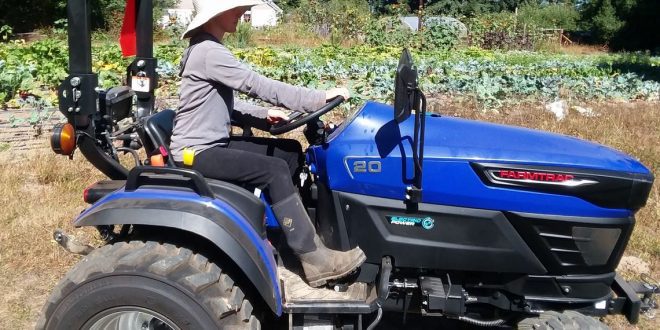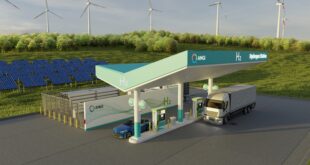SCE Helps Farm Industry Drive Electric at World Ag Expo
CONTRIBUTORS
PHOTO CREDIT: PAUL GRIFFO AND SOLECTRAC
If Steve Heckeroth had his way, every tractor in America would be electric.
Heckeroth, CEO and founder of Solectrac, a company that manufactures electric tractors, is among the exhibitors that Southern California Edison representatives are exchanging ideas with this week at World Ag Expo, a trade show for the agricultural industry held every year in Tulare.
Although the agricultural industry has been slow to adopt electric vehicles, Heckeroth says he is seeing a change in the community.
“Young organic farmers and vineyards are interested,” Heckeroth said, noting that these types of farmers tend to be more environmentally conscious. “They’re more progressive folks, and they want customers to view them as forward-looking and more sustainable.”

While farms may not be early adopters who are rushing to replace fleets of diesel tractors with electric ones, Heckeroth does see the potential for that conversion to happen — especially among larger vineyards that have dozens of tractors and farm thousands of acres.
When that begins to happen, SCE will be ready to help them make that transition.
“A centerpiece of our exhibit at World Ag Expo this year is Charge Ready Transport, our program to help customers who want to install EV charging for commercial and industrial vehicles,” said SCE Government Relations manager Brian Thoburn.
Last year, SCE launched Charge Ready Transport– Opens in new window, a program that aims to add charging stations for medium- and heavy-duty EVs at a minimum of 870 commercial sites within the utility’s 50,000-square-mile service area. The $356 million program will support charging for at least 8,490 industrial vehicles over a five-year period. For certain customers, the program also provides rebates to help with the purchase of charging stations.

“While Charge Ready Transport was designed with bus and truck fleets in mind, we also want to help the agricultural community power their vehicles and equipment with clean, zero-emission electricity,” said Katie Sloan, SCE director of eMobility and Building Electrification.
She added that the program focuses on electrifying transportation in communities like the San Joaquin Valley– Opens in new window, which the U.S. Environmental Protection Agency says has some of the worst air quality in the nation.
XL Lifts, a company that sells zero- and low-emissions forklifts and forklift battery charging stations, is one exhibitor hoping to make inroads with the agricultural industry. The company’s charging stations have recently been approved for use in the Charge Ready Transport program.
According to XL Lifts President Mike Marzahl, one of the barriers that keeps agricultural customers from adopting the latest electric forklift technology — i.e., those powered by lithium-ion batteries used in electric cars — is the high cost of installing charging infrastructure.
WHILE CHARGE READY TRANSPORT WAS DESIGNED WITH BUS AND TRUCK FLEETS IN MIND, WE ALSO WANT TO HELP THE AGRICULTURAL COMMUNITY POWER THEIR VEHICLES AND EQUIPMENT WITH CLEAN, ZERO-EMISSION ELECTRICITY.”
Katie Sloan, SCE Director
“Finding innovative ways to help our customers meet their zero-emissions initiatives remains a top priority,” Marzahl said, “and the Charge Ready Transport program helps subsidize that infrastructure cost for them.” He noted that there are also new state incentives– Opens in new window to help subsidize off-road EVs.
Marzahl also said that an added value of the program is the education it provides customers about the benefits of going electric. “You’re helping educate customers that there are cost-savings beyond just the cost of the equipment,” he said, citing the lower cost of fuel and maintenance as examples, not to mention environmental benefits.
SCE sees the electrification of medium- and heavy-duty vehicles as vital to achieving state climate goals. According to Pathway 2045– Opens in new window, the utility’s analysis of what must be done to meet state climate goals, California will need to electrify 33% of heavy-duty vehicles, 66% of medium-duty vehicles and 75% of passenger cars.
 Alternative Energy HQ solar power for homes, wind energy, and bio fuel issues
Alternative Energy HQ solar power for homes, wind energy, and bio fuel issues








